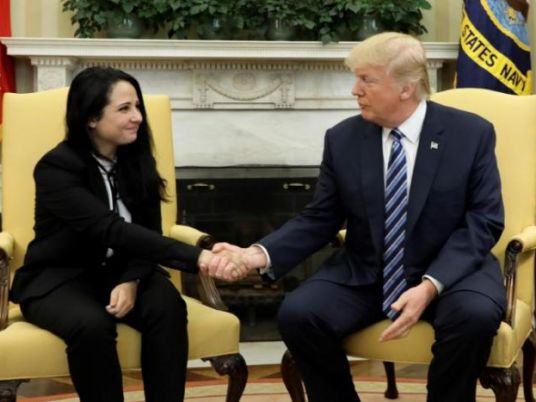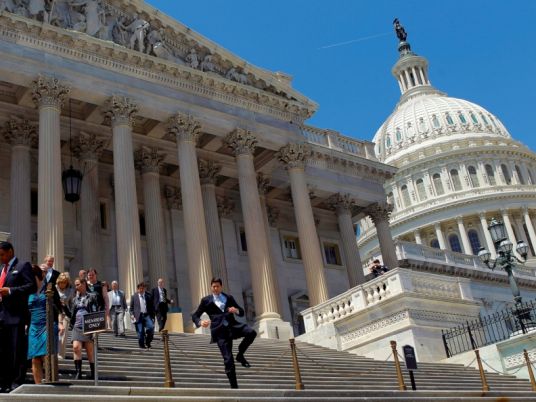President for just two weeks, Donald Trump is courting a constitutional crisis over his ban on travelers from seven Muslim-majority countries.
He has spooked allies around the world, fired the acting attorney general, feuded with Arnold Schwarzenegger over TV ratings and inspired millions to protest in the streets.
Remarkably, Trump has managed to create all this excitement, drama and chaos with little effort.
The spree of irresponsibility has involved both putting his signature on hastily drafted documents and firing off words in public or on Twitter.
Trump's tweet about the "so-called" judge who stopped his anti-immigrant/anti-refugee order, for example, was uniquely impulsive for a modern President.
After each of these moves, Trump has then stood back and watched the world struggle to respond.
The easiest way to understand why Trump does all this might be to call it political arson.
The analogy isn't perfect, but consider how Trump and a skeleton White House crew have used multiple incendiary actions to create a sense of emergency, while expressing little concern for those who are affected.
This is precisely how an arsonist disturbs the peace. With a flick of a match, he sets a destructive fire and then thrills to the reactions.
Likewise, the nation and the world are reacting in the way of a city besieged by a fire-setter. Fear and confusion reign and, before an effective response develops, it seem as though stability will never return.
The arsonist mentality
Experts writing in the Journal of the American Academy of Psychiatry and the Law note that pyromania is a "disorder of impulse" afflicting people whose moods are out of sync with their objective reality. If it is not stopped and addressed — either by the criminal justice system or mental health intervention — the arsonist's behavior becomes a chronic problem. This is why communities under an arsonist's attack will be plagued by one fire after another.
Does Donald Trump fit the arsonist profile? His impulsiveness has been evident throughout his life. As a boy he was so out of control that his parents sent him away to military school for discipline. In business, a big humiliating bankruptcy wasn't enough to stop his risk-taking. He went on to suffer three more. Instead of one headline-grabbing public divorce he had two.
In his campaign for President, he could not control his provocative behavior. When violence loomed at his rallies he used his microphone to encourage it. In debates and campaign speeches he torched his rivals with a stream of personal insults and distortions (such as repeating unsubstantiated claims from the National Enquirer that Ted Cruz's father helped killed JFK) never seen in a modern major party candidate.
Trump set fire to the GOP, happily burning down the structure for his own benefit.
As President, Trump's behavior has frequently contradicted the mood of what was going on around him. At his inauguration he didn't celebrate with a positive vision of the country, but instead described a nation on the brink of dystopia. A prayer breakfast became a forum for boasting. At a visit to the Central Intelligence Agency he complained about the press.
Were Trump alone in his impulsive and dark-minded condition he might have been contained by sober advisers. Instead, he has been aided mainly by an adviser, Stephen Bannon, who is committed to upending the political order and rose to prominence as head of a website that dispenses bigoted messages.
Apparently the most influential man in Trump's orbit, Bannon has no experience in public service and has likened himself, and his followers, to "know-nothing vulgarians."
The arson dynamic
Although arsonists frequently plead not guilty by reason of insanity, they rarely win this argument. This is because they are not generally considered to be delusional or otherwise separated from reality.
Simply put, they know what they are doing, and they know that it is wrong, but the compulsion is too strong and the thrill of the crime is too great. This issue was settled in a case involving a fire-setter who lit a barn ablaze, gazed at it from a distance, reported the fire and then asked the first responders if he could ride along with them to the scene.
In communities besieged by an arsonist, residents and public officials may fail at first to recognize what's happening. A spate of fires can seem simply a matter of coincidence until the pattern is established and the problem gets worse.
How Trump's 'Muslim ban' comments can hurt him in court
By then the public is alarmed and afraid and investigators are hard-pressed to stop the destruction. In the early 2000s, for instance, officials in greater Washington finally realized they had a serial fire-setter on their hands when Thomas Sweatt crossed into Maryland to commit one of his crimes.
With political arson, once it is recognized, it is not as mysterious as the problem of a fire-setter working under the cover of night to torch buildings.
Trump's destructive tendencies were once obscured by the notion that he would act as a normal President when the weight of the office settled upon him. This cover was blown when he issued his anti-immigrant executive order. Trump and his team have also signaled their disrupting intentions with diatribes against the press, assertions of "alternative facts," and wild claims about voter fraud that cast doubt on the foundation of American democracy.
Countering the chaos
One textbook on arson notes that people who set fires like to feel they have outsmarted the authorities and enjoy testing their intelligence against them. They are adept at reading others and not generally burdened by feelings of guilt. Some experts recommend sending female investigators to interrogate male suspects, believing they may slip up because they feel insulted under their questioning. The point here is that overconfidence and arrogance can make an arsonist vulnerable to those who set out to stop the crisis.
In the case of Sweatt, a determined and massive investigation led to the discovery of a small flaw in his methods. He used bits of his own clothing to make his fires and the remains contained DNA evidence.
A credibility problem for the White House?
Trump's political arson is now encountering a massive and increasingly well-organized opposition. Like a community terrorized by fire, the nation was temporarily shaken, but it is recovering its balance. Citizens gathering in the street and at airports signal resolve. Journalists monitor every development. Court cases brought in defense of the Constitution resemble firefighters' efforts to put out the flames.
In Washington state, a federal court order halting the Trump immigration ban across the country represented a defining act on behalf of a national community reacting to crisis. Although many Americans remain alarmed by the emergency created by the new administration, the response of the courts and others has been remarkably swift. In just two weeks, a White House devoted to chaos has been stopped, at least temporarily, by a system designed to put out fires.
Looking forward, those who favor stability and peace would be wise to consider the arson prevention advice offered by the United States Fire Administration. The agency advises education, organization, and most of all vigilan
Michael D'Antonio is the author of the book "Never Enough: Donald Trump and the Pursuit of Success" (St. Martin's Press).The opinions expressed in this commentary are his.
The article was first published in CNN's edition.cnn.com.




